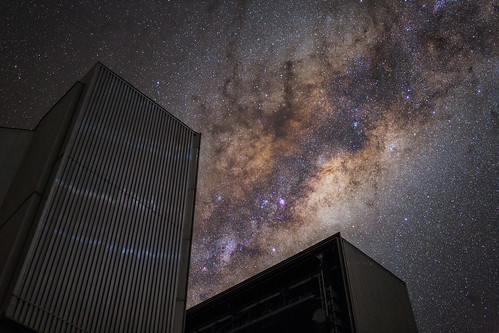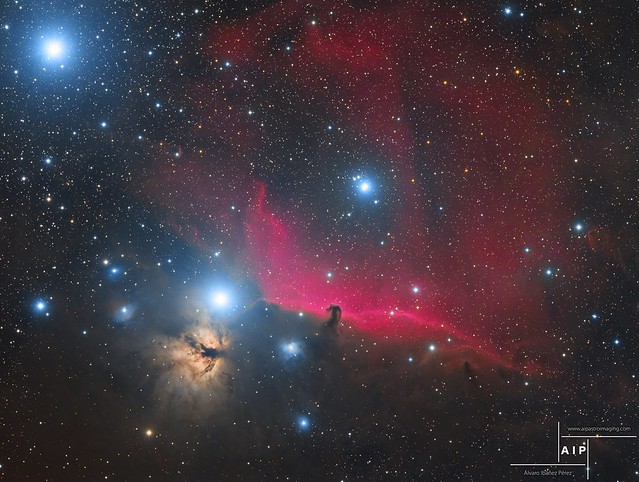Full version : https://cdn.astrobin.com/thumbs/JamOs-9 ... hqkGbg.jpg
Discovered in 1976 by the Australian Astronomical Observatory, CG4 (Cometary Nebula 4) is a dark nebula located 1300 light-years away in the constellation Puppis.
It is part of a group of dark nebulae with a cometary aspect, located around the Gum Nebula, all of them pointing away from the Vela supernova remnant, in the center of the Gum nebula. Some astronomers consider that these Bok globules, originally spherical in shape, have been deformed by the shock wave of the supernova.
The "head" of the nebula is illuminated by the young stars born in its center and visible in this image. The nebula extends 8 light-years long, 1.5 light-years in diameter.
Some call this nebula "the hand of God", but personally I see there rather an immense sandworm of Arrakis, aka "Dune", leaping to swallow the small galaxy!
The galaxy in question, PGC 21338, is actually more than 100 million LY away. The galaxy at the bottom of the image, NGC2427, is 45 million LY away.
Setup : Newton ASA 500mm - FLI ProLine16803 - Astrodon filters - Chilescope remote facility
LRGB + Ha
Total integration : 12h40
Copyright: Jean-Baptiste Auroux - https://www.astrobin.com/users/Jean-Baptiste_Paris/
















